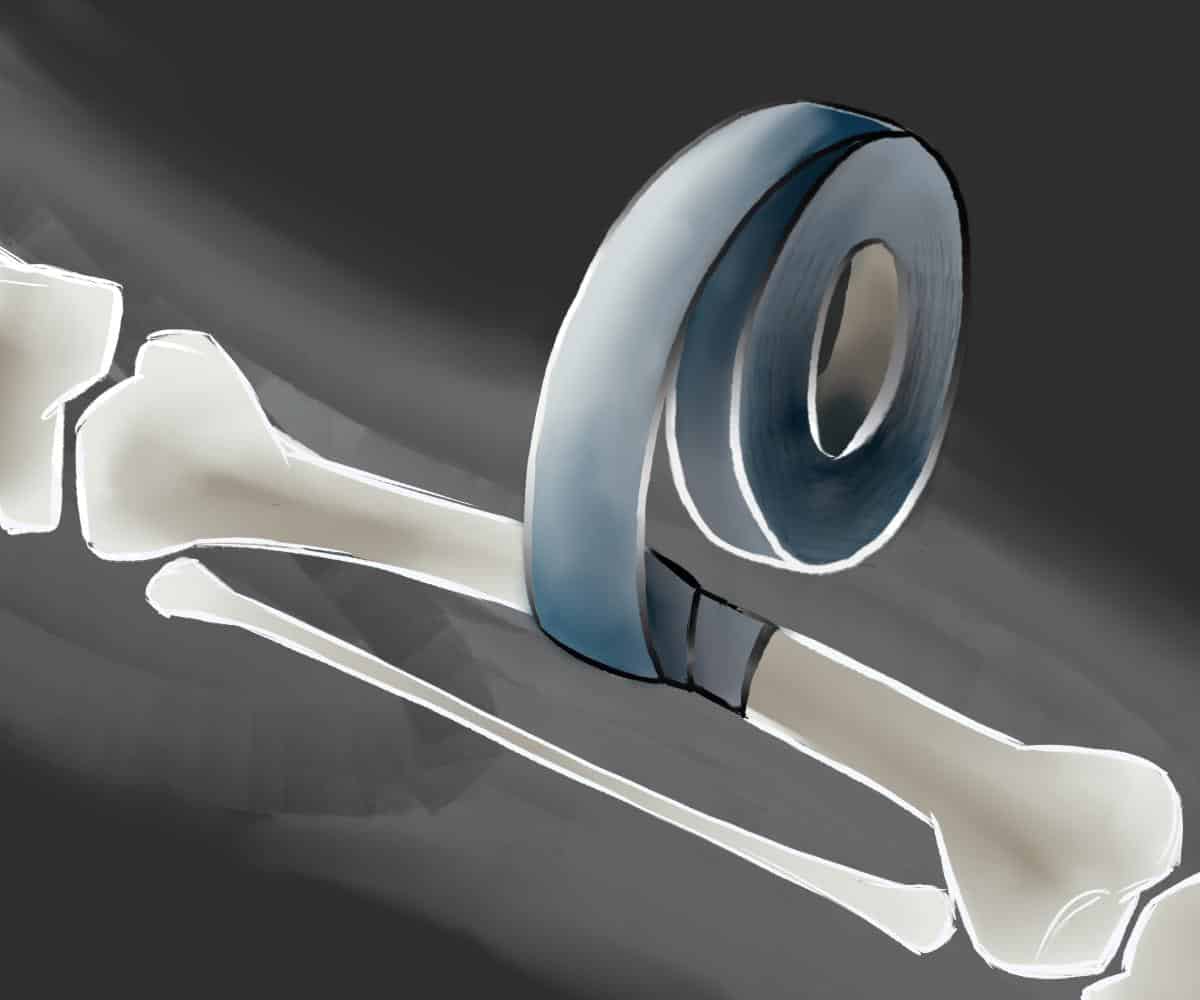Researchers affiliated with the University of Toronto and Sunnybrook Health Sciences Centre have invented a flexible bone stabilization device that promises to help improve the treatment of craniomaxillofacial (CMF) fractures — or fractures around the head and face. Referred to as BoneTape, the device is currently undergoing pre-clinical testing in hopes of improving CMF reconstruction.
Traumatic CMF fractures commonly occur due to road accidents, sports incidents, and war-related injuries. The thin and geometrically complex bones and soft tissues of the head and face, as well as the difficult cosmetic approaches of current treatment options, makes these injuries difficult to treat.
Jeffrey Fialkov, a CMF surgeon and one of the researchers credited for the invention, points out that current solutions for fractures — whether to the face or the femur — are similar. Metal plates are placed to align bone fragments and screws are used to hold the bones together while they heal.
However, plates and screws are not ideal for treating some shattered CMF bones that are very thin and complex in shape. For screws to provide solid fixation, a certain bone thickness is needed, thus limiting their applicability for some CMF injuries.
Reports suggest that up to half of the patients who undergo reconstructions experience complications, often requiring follow-up surgeries to remove the hardware.
In an interview with The Varsity, Fialkov said that it was the “need to get facial fractures and facial reconstruction to heal without loading them up with metal” that led to a search for alternative options. Fialkov and Cari Whyne, a senior scientist and professor of surgery at U of T, studied the structural integrity of the skull and facial skeleton to determine solutions for CMF.
In a major realization during their biomechanical research, Fialkov said that the pair found that “the forces that act on the facial skeleton are nowhere near as strong we originally thought and we don’t need to use so much hardware to fix it.”
Working with the idea of a flexible “tape-based” support system, research led by Paul Santerre, professor at the Institute of Biomaterials and Biomedical Engineering (IBBME) and University Health Network Baxter Chair in Health Technology & Commercialization, and Robert Pilliar, another IBBME professor, helped to identify the best materials to create BoneTape.
Applied to the fracture site once the fragments are properly realigned, a biocompatible adhesive attaches the tape to the bone. The material is translucent, allowing the fracture site to be seen and the tape to be properly aligned.
An advantage of the tape is its pliability. According to Michael Floros, a postdoctoral fellow working on the project, “using an initially flexible material is one of the major innovations.”
Unlike plates, which have to be moulded to closely match the shape of each bone fragment, the tape’s flexibility allows it to assume the natural shape of the patient’s CMF structure.
Made from a bioresorbable material, the BoneTape does not have to be removed from the patient once the fracture has healed either. Over an 18-month period, the material “resorbs in a process similar to dissolvable sutures,” Floros wrote to The Varsity.
The application of a flexible tape promises to be an easier technique for surgeons to master.
Miniplates must be bent to match a patient’s bone anatomy, and screws, often less than a couple millimetres in size, are very challenging to place. Misplacements can lead to an improper alignment of the bone that may cause discomfort and pain.
Use of BoneTape can also reduce tissue damage experienced by the bone during drilling for screw placement.
Fialkov said that once the bones are aligned, “it does not require a lot of skill to be able to just lay the bone tape across the fractured site.” This means that procedures in the operating room will be more efficient and accessible to users.
Following preclinical trials, Whyne, Fialkov, Santerre, Pilliar, Floros, and Eli Sone — a bioadhesive specialist and a recent addition to the team — plan to bring BoneTape to the market for clinical use through Cohesys, a company that Floros founded to oversee the project as it develops.


